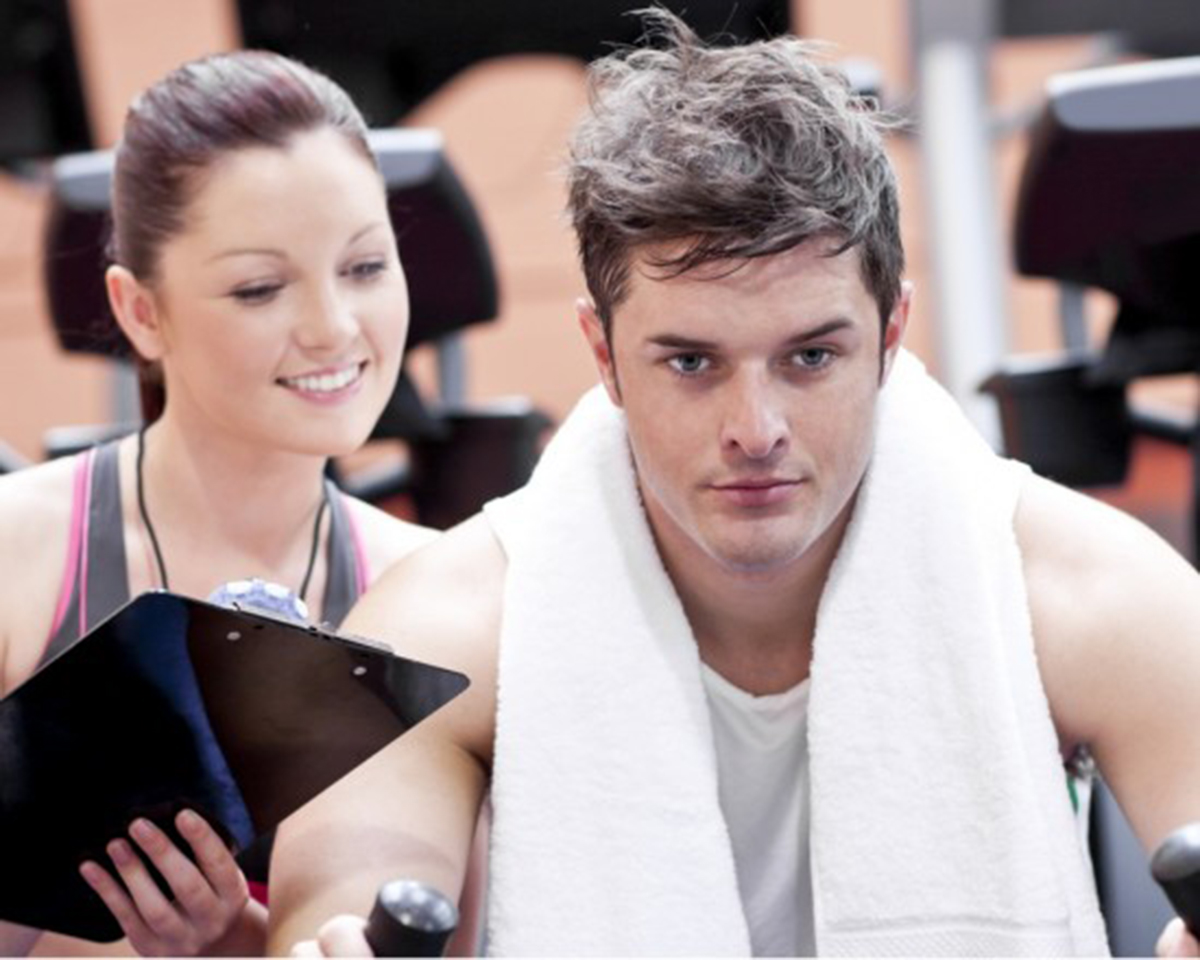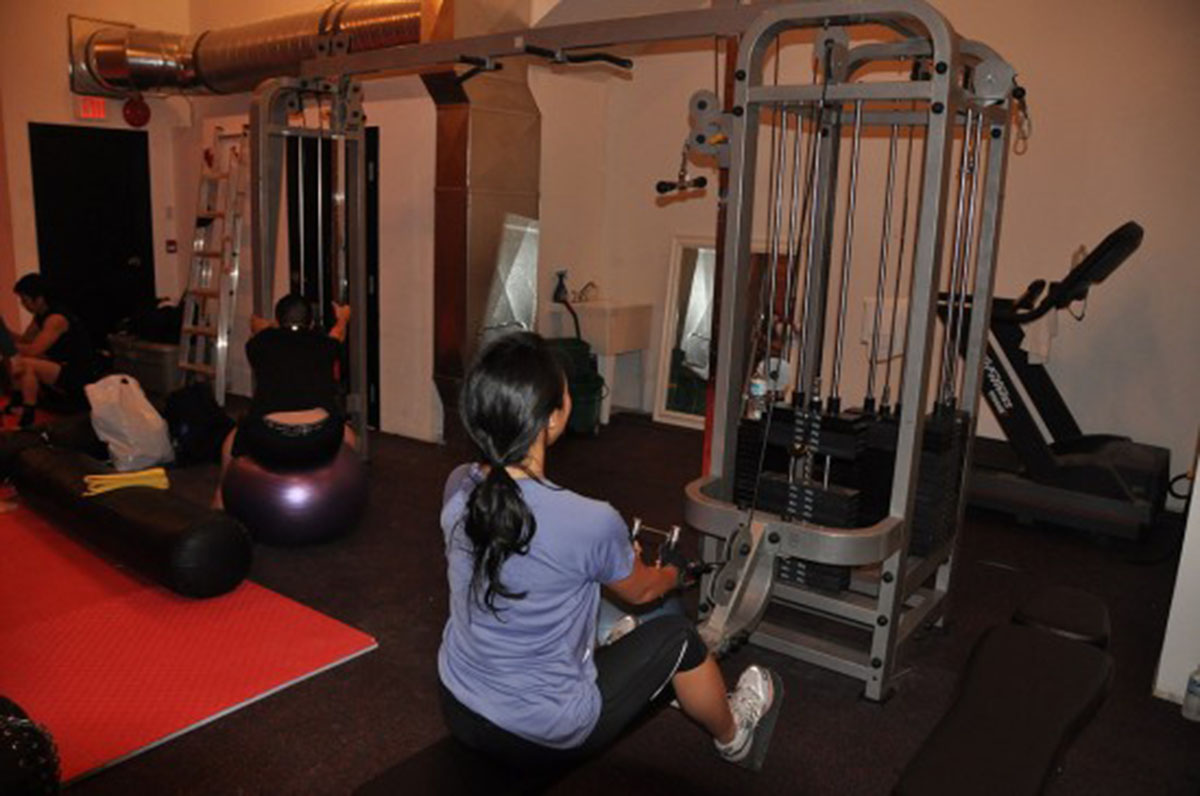The intensity of a training program is the single most important factor.

I don’t just mean how tiring it is.
Anyone can put together a training program that sees trainees emerge an hour later, smoked and sweat soaked, gasping, ‘that was intense!’ But do they get fitter, stronger and faster continuously? Not usually. That takes quality programming built around intelligent principles and I’m about to share one of those principles with you.
Training at high intensity is the way to get good results. If you train at below about 70% of your 1-rep max you can still get fitter and stronger, but for many it won’t produce either the physical effects they’re after. To exploit the maximum potential you have for strength and fitness, you need to lift weights that are subjectively heavy.
Why?
Because really hyper-intense training wrecks your form. You can imagine yourself lifting a weight that’s the very, very heaviest you can possibly lift. You’re wobbling, struggling, cheating where you can, wondering if you’re going to manage it… it’s a great way to teach yourself bad habits and ruin your form. But it applies just as much to other sports. If you run the very furthest you can run every time you train, how long before you can only just get from your front door to the waiting ambulance?
Not long. You’ll exhaust your body’s capacity to recover. And I remember the longest run I ever did; by the last two miles I was staggering like a zombie. That was my ‘1-run max,’ I guess, but I couldn't have done it every day!
We can look to where people train really intensely. I’m talking about sports where trainees must combine high quality, high intensity and high volume. I could look in a number of places, so if I've overlooked your sport, I apologize. But my two test cases are Thai boxers and the Bulgarian weightlifting team.
Thai boxers need good form. Every movement has to be the right shape for its intended purpose. And if you knew that if you got it wrong, a professional fighter would hit you as hard as he could, you’d tighten up your form too.
But they have to be able to deliver power too. Muay Thai has a scoring system but it’s first and foremost a fight; powder-puff punchers don’t survive. Oh, and you might be in the ring, throwing and blocking, for ten minutes, putting out full power and defending yourself all that time, with only short rests between rounds. Unlike boxing, if you cover up and ride a round out you’ll be disqualified. So you need form, intensity and volume.
Read More: Adjusting Training Intensity For Your Best Gains Ever
Yet, they often train for six to eight hours a day – incidentally about the same schedule as a pro Thai boxer. Imagine doing max squat after max squat, max clean and jerk after max clean and jerk, all day, six days a week.
Imagine’s what you’ll have to do. The Bulgarians don’t train that way. Instead they spend most of their time working in the three to six rep range with about 85% of an athlete’s 1RM.
Why 85%? And How To Implement It In Your Training
Training to 85% of your maximum allows you to get most of the benefits of training with your absolute maximum and most of the benefits of training at a much lower intensity too. It’s safer and more effective.

Training at 85% intensity allows the adaptive response to be in the right range, but it lets you get a lot more repetitions in. Look at it this way: How many max effort single squats can you do, before the weight starts to drop significantly? Say it’s four. OK, How many sets of three at 85% of your max effort can you do? I bet it’s more than four. Say it’s eight. Do your session at 85% and you've moved 4.5 times more weight and done six times as many squats.
You've been able to work your skill of squatting well while lifting a heavy weight – but you’re not running anything like the risk of injury. When you need maximum effort, this form of training will pay off because it’s prepared you to have good form and confidence. Don’t ask me. Ask the best-in-class athletes, from Thai boxers to Olympic weightlifters, who train this way.
If you’re applying this idea to other training modalities, you might need to tweak it a little.
Distance runners might want to run 85% of their maximum distance. Jumpers and throwers might want to lower the bar and get perfect rep after perfect rep over a nearly-max bar. Throwers might want to throw a little short while working on form and on feeling the flow and the line of force.
But it works for non-sports people too. If you’re just a regular gym goer who wants to get in better physical condition, training at maximum could result in injury – it’s more likely for someone with unprepared joints and less-than-perfect form. Train at 85% and watch your joints get better and your form improve as the load itself ‘teaches’ you.
Read More: Instinctive Training: What Is It? Should You Do It?
Don’t get too hung up on numbers.
85% means submaximal but not so much that it’s unlike maximal. 90% and 80% is fine too. And if you’re a thrower, let’s say, how do you work out what 85% of your max effort is? Instead of getting too mixed up in number crunching, look to the experience. You want the experience to feel similar. Think of it as maximalesque training. If it remains a significant challenge but doesn't leave you unable to walk to the car afterwards it’s good.
And here’s the news no-one wants to hear: for most recreational trainees, training at 85% of their true maximal effort would mean training a lot harder than they do right now.
- Photo by shutterstock.com
- Photo courtesy of Peter Gordon by Flickr : www.flickr.com/photos/superwebdeveloper/4945274189/


Your thoughts on this